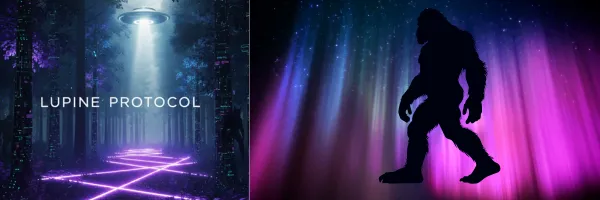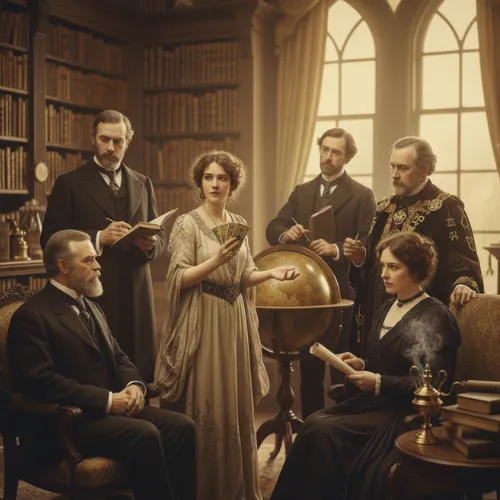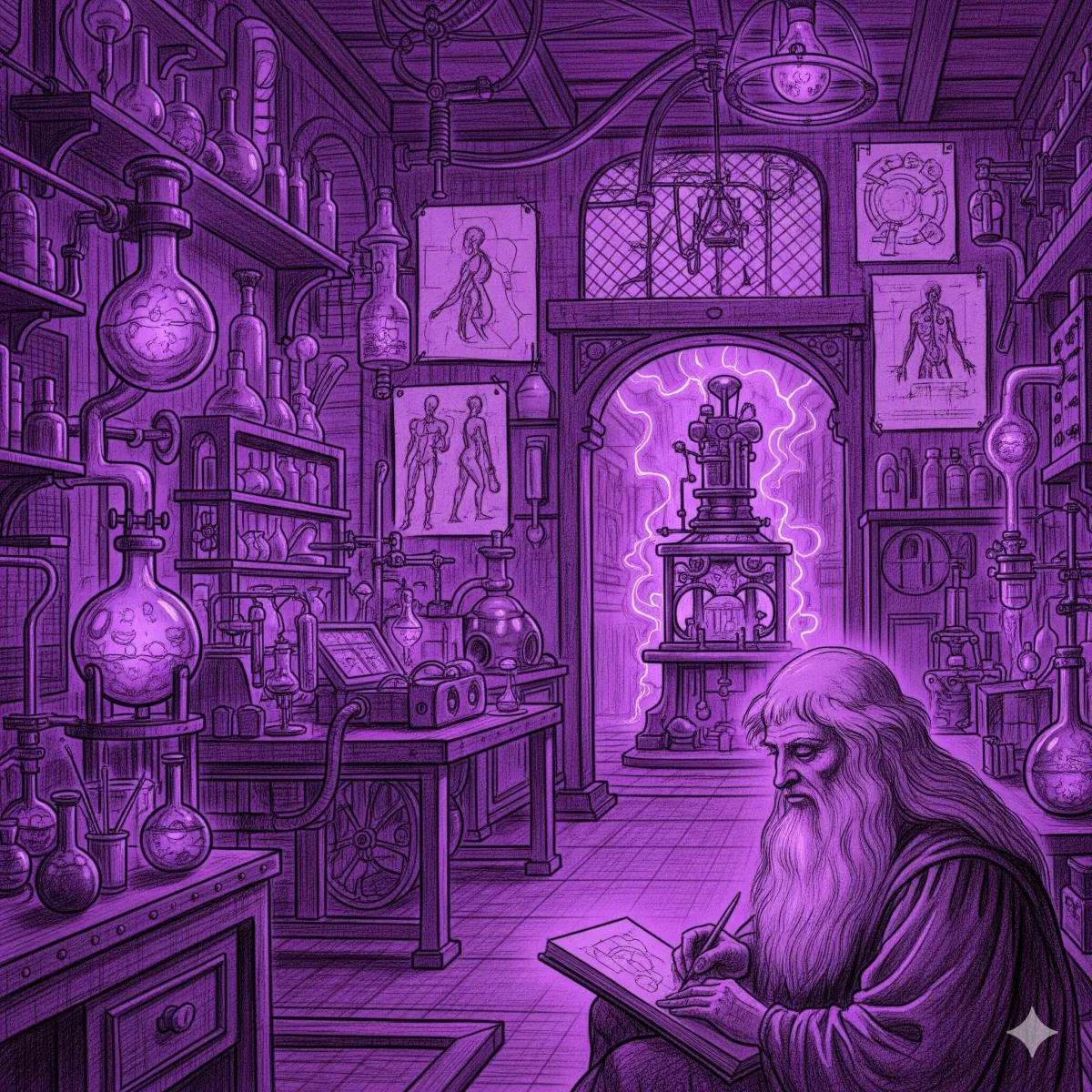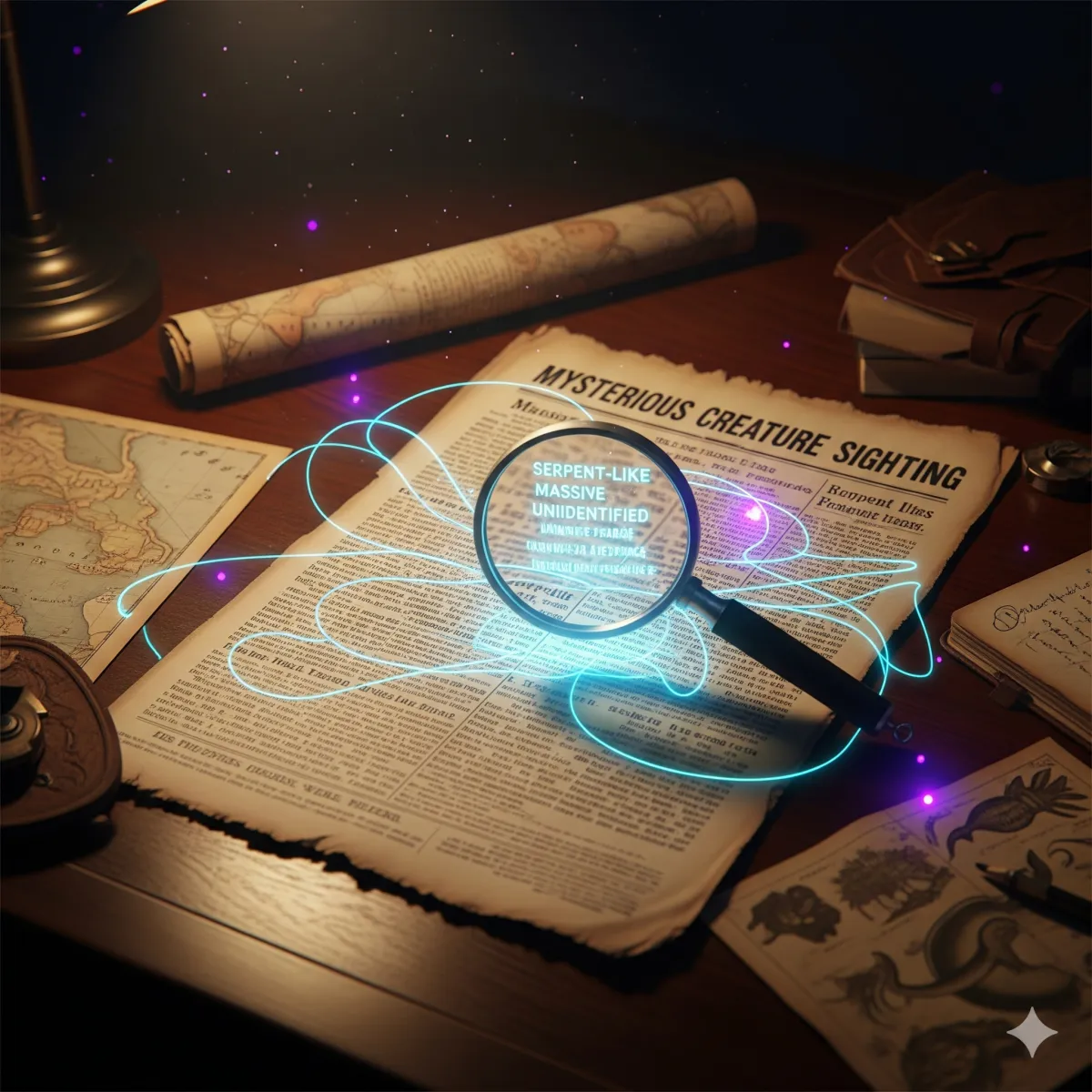

The Hermetic Order Of The Golden Dawn

The Golden Dawn: How a Victorian Secret Society Shaped Modern Spirituality
When we think of modern spiritual practices—tarot readings, ceremonial magic, Wiccan rituals, or New Age philosophy—we're standing on foundations laid by a secretive Victorian organization that existed for barely more than a decade in its original form. The Hermetic Order of the Golden Dawn, founded in London in 1887, created a legacy that reverberates through every corner of contemporary esoteric thought, occult practice, and even mainstream culture. From the tarot deck sitting on your bookshelf to the ritual structures used by modern magical practitioners, the Golden Dawn's fingerprints are everywhere.
The Revolutionary Beginning
The story begins in 1887 when three Freemasons—William Wynn Westcott, Samuel Liddell MacGregor Mathers, and William Robert Woodman—established the Hermetic Order of the Golden Dawn in London. The founding myth involved mysterious cipher manuscripts allegedly discovered by Westcott, which contained the outlines of magical rituals and teachings. Whether these manuscripts were genuine discoveries or elaborate forgeries (historical evidence strongly suggests the latter) matters less than what the three men built from them: a comprehensive system of Western ceremonial magic that synthesized Egyptian, Judaic, Christian, Rosicrucian, and Hermetic traditions into a coherent, graduated curriculum of esoteric study.
What made the Golden Dawn revolutionary wasn't just its syncretic approach to magic—though that was certainly innovative—but its structure and accessibility. The Order organized magical knowledge into a clear grade system based on the Kabbalistic Tree of Life, creating a progressive path of initiation from Neophyte through various grades to the highest levels of magical attainment. This wasn't mysticism as vague philosophy or folklore passed down through oral tradition; this was magic presented as a serious discipline with textbooks, examinations, and practical exercises.
A Radical Innovation: Admitting Women as Equals
Perhaps the most revolutionary aspect of the Golden Dawn was its treatment of women. In an era when women couldn't vote, had limited property rights, and were excluded from most Masonic and fraternal organizations, the Golden Dawn admitted women on completely equal terms with men. This wasn't a grudging accommodation or a separate "ladies' auxiliary"—women could advance through the same grades, perform the same rituals, and attain the same ranks as their male counterparts.
This decision had profound consequences. It meant that for the first time in modern Western esotericism, women had access to formal magical training and could become authorities in their own right. The Order attracted numerous talented women who would go on to shape the occult landscape of the twentieth century. Florence Farr, a prominent actress and feminist, became a high-ranking member and close collaborator with William Butler Yeats. Moina Mathers, sister of philosopher Henri Bergson and wife of MacGregor Mathers, became a skilled clairvoyant and artist who created much of the Order's visual symbolism. Annie Horniman, heiress to a tea fortune, provided financial backing to the Order and later revolutionized British theatre by founding the Abbey Theatre with Yeats.
The inclusion of women wasn't merely progressive politics—it fundamentally altered the character of Western magic. Women brought different perspectives, different concerns, and different experiences to magical practice. This would ultimately influence the development of modern Wicca, goddess spirituality, and feminist esoteric movements in the latter half of the twentieth century.
The Poet and the Order: W.B. Yeats's Magical Life
Among the Golden Dawn's most famous members was the Irish poet William Butler Yeats, who joined in 1890 and remained deeply involved in magical work throughout his life. For Yeats, the Golden Dawn wasn't a passing fancy or youthful indiscretion—it was central to his artistic and philosophical development.
Yeats threw himself into the Order's work with characteristic intensity. He performed rituals, studied correspondences, and even engaged in magical warfare with other members during the Order's fractious later years. His magical motto, "Demon est Deus Inversus" (The Devil is God Reversed), reflected his understanding of the dynamic interplay between opposites that characterized both Golden Dawn philosophy and his own poetry.
The influence of Golden Dawn symbolism permeates Yeats's poetry. His elaborate system of gyres, spirals, and historical cycles owes much to his magical studies. Poems like "The Second Coming" with its famous lines about the falcon that "cannot hear the falconer" and the "rough beast" slouching toward Bethlehem draw directly on the apocalyptic and transformative symbolism he explored in the Golden Dawn. His concept of the "Great Memory," a collective unconscious accessible through symbol and ritual, prefigured Carl Jung's ideas and came directly from his magical work.
Yeats's relationship with fellow Golden Dawn member Maud Gonne—the great unrequited love of his life—was conducted partly through magical workings. They performed rituals together, explored the astral plane, and Yeats believed they were spiritually married in some higher realm, even though Gonne repeatedly refused his proposals of earthly marriage. His poetry, particularly the cycle dedicated to Gonne, cannot be fully understood without recognizing this magical context.
The poet's influence helped legitimize occult interests among literary and artistic circles. If a Nobel Prize-winning poet took magic seriously as a source of wisdom and inspiration, perhaps it deserved more respect than Victorian rationalists were willing to grant it.
Bram Stoker and Gothic Shadows
While the evidence for Bram Stoker's formal membership in the Golden Dawn remains debated by historians, his connections to the Order's circle are indisputable. Stoker moved in the same social and theatrical circles as prominent Golden Dawn members, particularly through his work as manager of the Lyceum Theatre, where he worked closely with the actor Henry Irving.
Whether or not Stoker was initiated, his masterpiece "Dracula" (1897) is saturated with the occult symbolism and concerns that preoccupied Golden Dawn members. The novel appeared at the height of the Order's influence, and its treatment of vampirism draws on the same esoteric traditions the Golden Dawn studied—the idea of psychic vampirism, the power of will and mesmerism, the importance of sacred symbols and rituals in combating supernatural evil.
The character of Van Helsing, the Dutch professor who understands both modern science and ancient wisdom, embodies the Golden Dawn ideal of synthesizing rational knowledge with esoteric understanding. His use of communion wafers, crucifixes, and garlic isn't mere superstition but applied magical practice—using sacred symbols as tools of protection and power. The novel's careful attention to timing, the significance of doorways and thresholds, and the power of blood all reflect concerns central to ceremonial magic.
"Dracula" helped encode occult ideas into popular culture in ways that continue to resonate. Every time a modern vampire story uses mystical rules and ritual protections, it's drawing on traditions that the Golden Dawn helped systematize and popularize.
Pamela Colman Smith and the Tarot Revolution
Perhaps no single artifact better demonstrates the Golden Dawn's enduring influence than the tarot deck most people use today. The Rider-Waite-Smith Tarot, first published in 1909, was created by two Golden Dawn members: Arthur Edward Waite, who conceived the deck's symbolism, and Pamela Colman Smith, who painted the iconic images.
Pamela Colman Smith—often known simply as Pixie—was a Jamaican-British artist and Golden Dawn initiate who brought her unique artistic vision to Waite's instructions. What made this deck revolutionary was Smith's decision to illustrate all 78 cards with meaningful pictorial scenes, not just the 22 Major Arcana. Previous tarot decks had largely left the Minor Arcana (the numbered suit cards) as simple pip cards, like playing cards. Smith filled each card with symbolic narrative imagery drawing directly on Golden Dawn teaching documents.
The Golden Dawn's magical curriculum included extensive study of tarot correspondences—connections between the cards and astrology, Kabbalah, elements, and Hebrew letters. Smith and Waite translated these abstract correspondences into visual symbolism that made the cards accessible to intuitive reading. The result was a deck that could speak to anyone, not just trained occultists.
Smith's artistry gave us the images burned into our collective consciousness: the solitary figure in the Nine of Swords sitting up in bed beneath swords of anxiety; the Three of Swords with its heart pierced by three blades; the Ten of Cups with its rainbow of chalices above a happy family. These images have been endlessly copied, adapted, and reinterpreted in thousands of subsequent tarot decks.
Tragically, Smith died in poverty in 1951, largely forgotten and having received only a flat fee for her work—no royalties from the deck that would sell millions of copies. It's only in recent decades that her contribution has been properly recognized, with many now calling the deck the Smith-Waite or Smith-Rider-Waite Tarot to center her creative achievement.
The Rider-Waite-Smith deck democratized tarot. It made divination accessible to anyone drawn to it, not just those with years of esoteric training. This accessibility helped fuel the explosion of interest in tarot during the 1960s and 1970s counterculture, making it a staple of New Age spirituality.
The Ritual Foundation of Modern Magic
If the Golden Dawn's influence on tarot is concrete and visible, its influence on magical practice itself is even more fundamental. The Order created the template that virtually all modern Western ceremonial magic follows.
Before the Golden Dawn, magical practice in the Western world was fragmentary—grimoires with contradictory instructions, folk magic passed down orally, Masonic allegories, spiritualist séances. The Golden Dawn synthesized these scattered traditions into a coherent system with clear techniques, theoretical foundations, and progressive training.
The Golden Dawn's ritual structure has become the standard format: the casting of a circle, the invocation of elemental guardians at the quarters (east, south, west, north), the invocation of higher powers, the statement of intention, and the closing of the circle. This basic pattern, drawn from the Golden Dawn's Lesser Banishing Ritual of the Pentagram and similar workings, appears in virtually every modern magical tradition from Wicca to chaos magic to Thelema.
The Order's grade system, based on the ten Sephiroth of the Kabbalistic Tree of Life, provided a map of spiritual development that has been adapted by countless groups. The idea that magical training should be progressive, with each grade building on the last and requiring both knowledge and practical demonstration, set a standard that modern magical orders still follow.
Even groups that explicitly reject ceremonial magic often structure their practices in ways that echo the Golden Dawn. Wicca, developed by Gerald Gardner in the mid-twentieth century, draws heavily on Golden Dawn ritual structure, though Gardner adapted it to fit a more nature-centered, goddess-oriented framework. Chaos magic, which emerged in the 1970s as a deliberately post-modern, results-focused approach, still uses techniques and concepts pioneered by the Golden Dawn, even as it rejects the Order's emphasis on tradition and hierarchy.
The Fracturing and the Spreading of Seeds
The original Golden Dawn existed in its purest form for barely more than a decade. By the turn of the twentieth century, it had fractured into competing factions amid scandals, personality conflicts, and disputes over authority and teaching. The most dramatic split came in 1900 when Aleister Crowley—perhaps the most famous and infamous occultist of the twentieth century—attempted to claim authority in the Order, leading to confrontations that included Yeats supposedly repelling Crowley from the Order's vault using magical force.
Yet this fracturing, painful as it was for those involved, actually spread the Golden Dawn's influence more widely. Different factions took the teachings in different directions. MacGregor Mathers continued his own version in Paris. Arthur Edward Waite formed the Fellowship of the Rosy Cross with a more mystical, less magical focus. Dion Fortune, initiated into an offshoot order, founded the Society of the Inner Light and became one of the twentieth century's most influential occult writers. Aleister Crowley incorporated much Golden Dawn material into his own system of Thelema, spreading those teachings worldwide through his writings and his own organization, the A∴A∴.
Israel Regardie, Crowley's secretary for a time, eventually published much of the Golden Dawn's secret teaching materials in the late 1930s. While this betrayal of oath-bound material scandalized many occultists, it also ensured that the Golden Dawn's techniques and knowledge would survive for future generations. Regardie's books became foundational texts for the mid-century occult revival.
The Mid-Century Revival and New Age Influence
The Golden Dawn's influence expanded dramatically during the counterculture movements of the 1960s and 1970s. As a generation questioned established institutions and sought alternative spiritualities, they discovered the Golden Dawn's teachings through published materials that were now widely available.
The synthesis that the Golden Dawn had pioneered—combining Egyptian, Greek, Jewish, Christian, and Eastern elements into a comprehensive magical system—appealed to seekers looking for a spirituality that transcended single religious traditions. The Golden Dawn had created exactly the kind of syncretic, experiential, individualistic spirituality that the New Age movement would embrace.
Golden Dawn concepts became woven into the fabric of New Age thought, often without explicit acknowledgment. The idea of correspondences—that everything in the universe is connected through symbolic relationships—became a New Age truism. The emphasis on personal spiritual development through progressive stages influenced everything from est seminars to modern yoga teacher trainings. The combination of ritual practice with psychological transformation prefigured New Age ideas about the power of intention and manifestation.
The chakra system, meditation techniques, and Eastern practices that became popular in New Age circles were often encountered through books written by authors trained in the Golden Dawn tradition, who had already done the work of translating these concepts for Western practitioners.
Influence on Art and Literature
Beyond specific practitioners, the Golden Dawn's influence seeped into twentieth-century art and literature in countless ways. The Symbolist movement in art, which emphasized dreams, spirituality, and the power of symbol over literal representation, found natural allies in Golden Dawn members. The Order's rich visual symbolism—its elaborate diagrams, its color correspondences, its geometric designs—influenced visual artists from Aleister Crowley's tarot paintings to Austin Osman Spare's automatic drawings to the psychedelic art of the 1960s.
In literature, the influence extended far beyond Yeats. Dion Fortune's occult novels, particularly "The Sea Priestess" and "Moon Magic," brought Golden Dawn practices into fiction, inspiring generations of writers to explore magical themes. Arthur Machen, a member of a Golden Dawn offshoot, wrote supernatural horror fiction that influenced H.P. Lovecraft and the entire tradition of cosmic horror. The detailed magical worldbuilding in modern fantasy literature—from Harry Potter's wand-waving and spell-casting to the elaborate magic systems in works by authors like Patrick Rothfuss—owes a debt to the Golden Dawn's systematic approach to magic.
The Order's influence appears in unexpected places. James Joyce, though not a member, was fascinated by the occult and incorporated Hermetic symbolism into "Ulysses" and "Finnegans Wake." The surrealists, with their interest in automatism, dreams, and the unconscious, explored territory that Golden Dawn members had mapped through meditation and astral projection. Even comic books and graphic novels, from Alan Moore's "Promethea" (Moore is himself a ceremonial magician heavily influenced by the Golden Dawn tradition) to the supernatural horror of "Hellblazer," draw on the symbolic language the Order helped codify.
The Psychological Turn
One of the Golden Dawn's most lasting contributions was its psychological approach to magic. While the Order's founders conceived of magical entities as objectively real, many members—particularly in later generations—interpreted the work psychologically. The spirits and angels invoked in rituals could be understood as aspects of the psyche; the Kabbalistic Tree of Life as a map of consciousness; magical practice as a form of deep psychological work.
This psychological interpretation made magic respectable in certain intellectual circles and created a bridge to the emerging field of psychology. Carl Jung's concept of archetypes and the collective unconscious parallels ideas that Golden Dawn members explored through their magical work. Jung himself was familiar with occult literature and incorporated alchemical symbolism into his psychology.
This psychological approach to magic reached its fullest expression in Dion Fortune's writings, particularly her book "The Mystical Qabalah," which presented Kabbalah as a Western system of spiritual psychology. Fortune's work influenced transpersonal psychology, Jungian analysis, and numerous therapeutic modalities that incorporate symbolic and imaginative work.
The contemporary practice of "chaos magic," which treats belief itself as a tool that can be picked up and put down, takes this psychological approach to its logical extreme, yet still relies on techniques and structures pioneered by the Golden Dawn.
Modern Reconstructions and Contemporary Practice
Today, numerous organizations claim descent from or inspiration by the Golden Dawn. Some maintain strict adherence to the original teachings and grade structures. Others have adapted the material for contemporary practitioners. The Hermetic Order of the Golden Dawn (HOGD), the Open Source Order of the Golden Dawn (OSOGD), and various other groups keep the tradition alive with varying degrees of fidelity to the original vision.
More significantly, Golden Dawn influence pervades modern magical practice even among those who have never formally studied the system. Pick up almost any modern book on magic, Wicca, tarot, or New Age spirituality, and you're encountering ideas, techniques, and symbols that the Golden Dawn either created or popularized: the Kabbalistic Tree of Life as a spiritual map, the four elements and their directional correspondences, the pentagram as a protective symbol, the use of visualization and imaginative work in spiritual practice.
Modern witchcraft, especially, owes an enormous debt to the Golden Dawn, even though most Wiccans aren't aware of it. Gerald Gardner, Wicca's founder, incorporated substantial material from the Golden Dawn into his new tradition. The Wiccan circle-casting, the calling of the quarters, the structure of initiation—all echo Golden Dawn practices. Doreen Valiente, who wrote much of the poetic material used in Wicca, was steeped in the magical literature influenced by the Order.
The Digital Age and Beyond
The internet age has amplified the Golden Dawn's influence in unexpected ways. The Order's teachings, once secret and available only to initiates, are now accessible to anyone with an internet connection. Online communities discuss and practice Golden Dawn magic, sharing experiences and insights across continents. Video tutorials demonstrate the Lesser Banishing Ritual of the Pentagram. Apps calculate tarot correspondences based on Golden Dawn attributions.
This democratization would have horrified the Order's founders, who believed that magical knowledge should be earned through progressive initiation. Yet it has also ensured that these teachings reach seekers who might never have access to a physical lodge or temple. The Golden Dawn's systematic approach to magic—with its clear instructions, detailed correspondences, and practical exercises—translates well to self-study, making it ideal for the autodidact spiritual seekers of the digital age.
Contemporary chaos magicians remix Golden Dawn techniques with pop culture references and post-modern irony. Traditionalists preserve the Order's rituals with meticulous accuracy. Both approaches testify to the flexibility and robustness of the system the Victorian founders created.
Legacy and Lasting Impact
The Hermetic Order of the Golden Dawn existed in its original form for barely thirteen years, from 1887 to 1900, before fracturing into competing factions. Its total membership probably never exceeded a few hundred people. Yet this small, short-lived organization fundamentally reshaped Western spirituality.
The Golden Dawn created the template for modern magic. It synthesized scattered traditions into a coherent system. It made esoteric knowledge accessible through structured teaching. It demonstrated that magic could be approached as a serious discipline worthy of study and practice. It showed that spiritual development could follow a clear path with recognizable stages and attainments.
By admitting women as equals, it opened magical practice to half the population previously excluded, changing the character of Western esotericism. By attracting artists, writers, and intellectuals, it ensured that magical ideas would flow into mainstream culture through art, literature, and eventually popular entertainment.
The Order's influence appears in the tarot deck on the bookstore shelf, the pentagram worn as jewelry, the circle-casting of modern Wiccans, the visualizations used in meditation apps, the symbolism in fantasy novels and comic books. It laid groundwork for Jung's psychology, influenced the Surrealists, inspired the beat poets, and provided tools for the counterculture.
Most people who encounter Golden Dawn ideas today don't know their origin. The Order's greatest success has been in making its exotic, Victorian-era synthesis of obscure traditions feel natural and obvious to contemporary seekers. When someone picks up a Rider-Waite-Smith tarot deck to seek guidance, when a Wiccan casts a circle and calls the quarters, when a meditation practitioner visualizes light moving through their body in a particular pattern—they're participating in traditions that the Golden Dawn crystallized from older sources and transmitted to modernity.
The Victorian occultists who gathered in London temples to perform elaborate rituals would probably be astonished by their legacy. They thought they were recovering ancient wisdom and authentic magical practices. In reality, they were creating something new: a distinctly modern form of spirituality that honored the past while looking toward the future, that combined rational structure with transcendent experience, that offered individual empowerment through disciplined practice.
That synthesis—scholarly yet experiential, traditional yet innovative, rigorous yet accessible—defines the modern esoteric landscape. Every time someone lights a candle with magical intention, meditates on a symbolic image, or seeks wisdom through divination, they're walking a path that the Golden Dawn helped clear. The Order's founders claimed to be transmitting ancient secrets; unknowingly, they were planting seeds that would flower into the diverse, vibrant, sometimes chaotic spiritual landscape of the twenty-first century.
The golden dawn they named their order after wasn't just a poetic reference to illumination—it was prophetic. They stood at the dawn of a new age of spiritual exploration, one that would break free from religious dogma without abandoning the sacred, that would embrace reason without rejecting mystery. That dawn has broken, and its light—golden, magical, and radiant with possibility—illuminates seekers still
Explore The Mysteries
welcome to the central archive. Lupine Protocol is a unified platform dedicated to the methodical investigation of unexplained phenomena. We bring a data-driven, evidence-based approach to the subjects that exist on the fringes of conventional science. Whether you're a seasoned researcher or a curious newcomer, our mission is to provide the resources, tools, and in-depth analysis you need to explore the world's most enduring mysteries.

"Whether you're documenting the undocumented, investigating the inexplicable, or just addicted to the unknown—this is where legends are born."

Pages
Listed On


Information

© 2025 ward media projects - All Rights Reserved.






